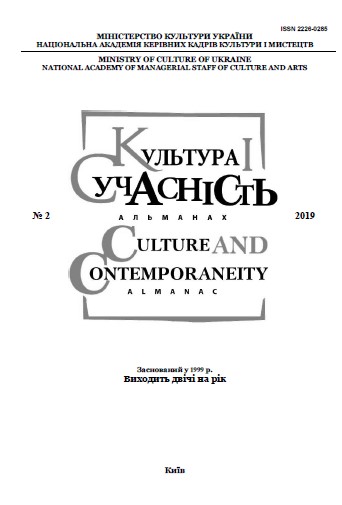ПОЛІТИКА РАДЯНСЬКОЇ ДЕРЖАВИ ІЗ ЗНИЩЕННЯ ПРАВОСЛАВНИХ ХРАМІВ В УКРАЇНІ: МЕХАНІЗМ ТА ДУХОВНО-КУЛЬТУРНІ НАСЛІДКИ (1920-ті – 1965 рр.)
THE SOVIET STATE POLICY AIMED TO DESTRUCTION OF THE ORTHODOX CHURCHES IN UKRAINE: MECHANISM AND SPIRITUAL-CULTURAL CONSEQUENCES (1920 – 1965 YEARS)
Author(s): Dmytro Valeriyovych ViedienieievSubject(s): Cultural history, Architecture, History of Church(es), Politics and religion, Interwar Period (1920 - 1939), WW II and following years (1940 - 1949), Post-War period (1950 - 1989), Eastern Orthodoxy, History of Art
Published by: Національна академія керівних кадрів культури і мистецтв
Keywords: The spiritual life; the Orthodox church in Ukraine; the church architecture; historical-architectural heritage; the history of culture; state atheism; state-religious relations;
Summary/Abstract: The study of the pernicious spiritual-cultural consequences of the targeted destruction (closing) of the orthodox religious buildings as one of the policy direction of the state atheism in Ukrainian SSR, the disclosing of the ideological-political and state-administrative components of the campaign mechanism aimed to liquidate the churches as the valuable component of the historical-cultural heritage. Methodology. The article is based on the historical and logical epistemological approaches, the author uses the complex of the general scientific methods with the methods of historical science, cultural studies and other social-humanitarian sciences. In particular, the structural-functional, historical-genetic, historical-comparative, cliometric, cros-cultural, historical-legal methods are used. The scientific novelty. The author based on the analysis of the documental sources makes an attempt to complex consideration of the main stages (campaigns), regulatory framework and organizing-administrative policy mechanism aimed to destruction of the orthodox spiritual-architects buildings (churches, monasteries and other objects of the national spiritual-cultural heritage) as the structural-functional component of the state atheism, the form of the religious persecution and oppression of conscience freedom in Ukraine. Conclusions. The basis of the communistic relations model with Orthodoxy constituted from the displacement of the church from the all spheres of the social life by the any ways. Sharply negative attitude of the Soviet government to the church remained unchanged during the all USSR existence, however it had the different forms depends on the external and internal state position, political will of its leaders. The state structures activity for the destruction of the churches based on the purposeful ideological solutions of the leading organs of Communist party and headed state organs. Campaigns for the churches destruction, as a rule, correlated with the persecutions of faith, orthodox clergy and laity, coincided with the repression measures against the religious groups in USSR and Ukrainian SSR. The churches destructions or its transfiguration to the civil-households and other buildings not for its purpose in the same time delivered an irreparable blow to the spiritual-cultural heritage, because the religious buildings were the organic component of the domestic history, culture, the basis of the cultural-civilization traditions and one of the main marks of the historical-cultural memory.
Journal: Культура і сучасність
- Issue Year: 2019
- Issue No: 2
- Page Range: 3-10
- Page Count: 8
- Language: Ukrainian

